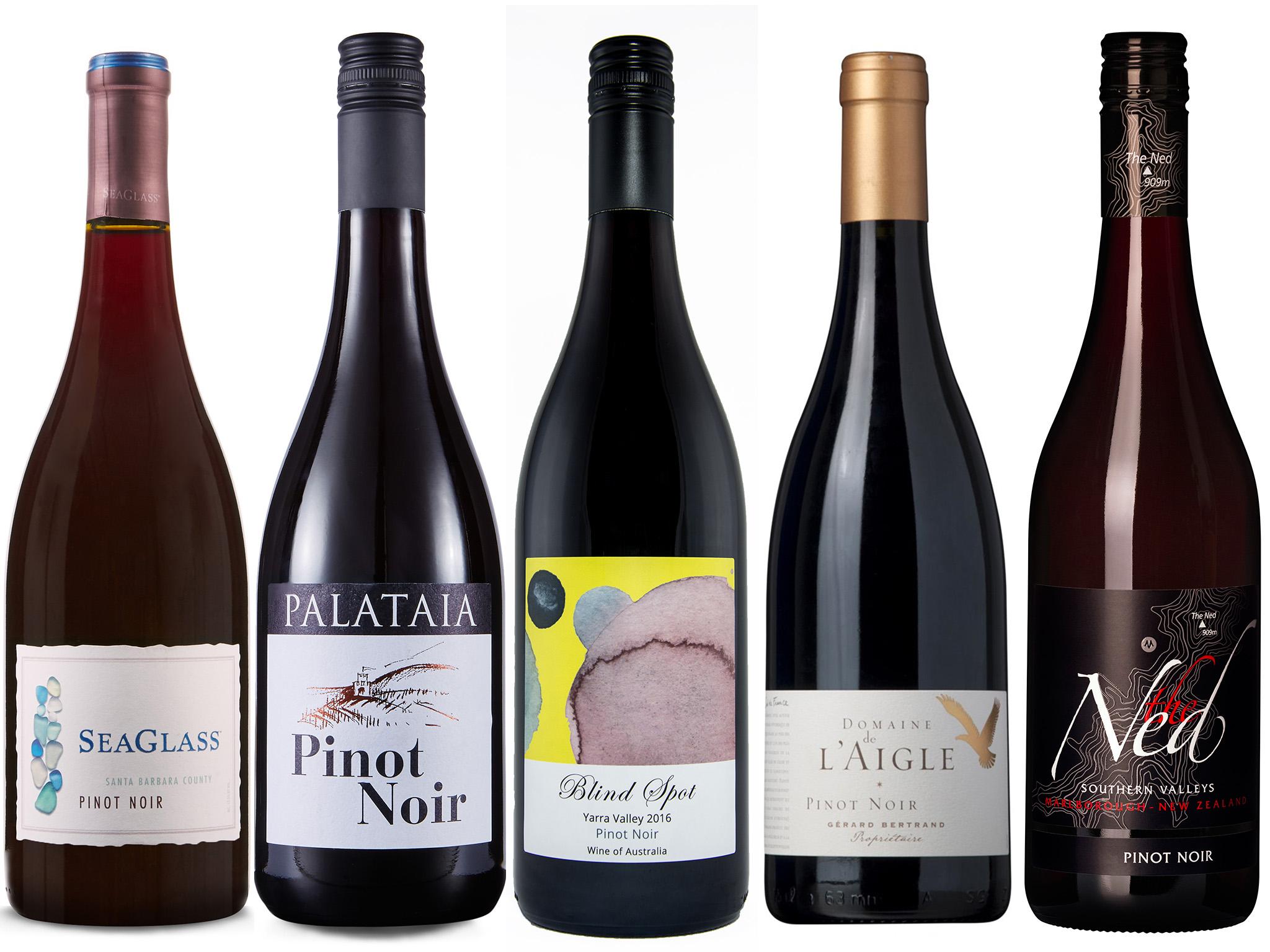The Independent's journalism is supported by our readers. When you purchase through links on our site, we may earn commission.
Wines of the week: Six affordable bottles of pinot noir
Terry Kirby delves into the world of the Pinot Noir grape: although renowned for being difficult to grow, it is now thriving in cooler climates and becoming more affordable

Your support helps us to tell the story
From reproductive rights to climate change to Big Tech, The Independent is on the ground when the story is developing. Whether it's investigating the financials of Elon Musk's pro-Trump PAC or producing our latest documentary, 'The A Word', which shines a light on the American women fighting for reproductive rights, we know how important it is to parse out the facts from the messaging.
At such a critical moment in US history, we need reporters on the ground. Your donation allows us to keep sending journalists to speak to both sides of the story.
The Independent is trusted by Americans across the entire political spectrum. And unlike many other quality news outlets, we choose not to lock Americans out of our reporting and analysis with paywalls. We believe quality journalism should be available to everyone, paid for by those who can afford it.
Your support makes all the difference.Last week, this column went around the globe in search of new grapes and different styles. This week, we are off in search of just one grape: the elusive, beguiling Pinot Noir.
Pinot Noir, is, of course largely responsible for two of the greatest wine styles: the inimitable Burgundy – capable of ageing and complexity but lighter, silkier and more perfumed than the heavier, richer tastes of Bordeaux; and as one of the essential grapes of Champagne, alongside Chardonnay and Pinot Meunier.
But despite being notoriously difficult to grow, preferring chalky soils and moderate temperatures and delivering only low yields, Pinot Noir is now thriving in cool climate wine growing regions around the world. Here are some lovely wines that, unlike great Burgundies and Champagne, won’t break the bank...
Firstly, from Burgundy and Champagne to the South of France, where Pinot Noir can only really prosper at higher altitudes as cooler temperatures offset Mediterranean heat. The wines can be fuller and richer than Burgundy, but less complex. The Domaine d’Aigle Pinot Noir 2014 (£16.99 or £14.99 as part of mixed six bottle purchase, Majestic.co.uk) is from a high-altitude estate near Limoux in the Aude, owned by southern French wine supremo Gerard Bertrand. It has the distinctive red fruit flavours of Pinot – strawberries and raspberries – but there is spicy depth and tannic structure. Excellent with all Mediterranean-style foods as well as game like grouse or pheasant.
Staying in Europe, but whizzing due north to the Pfalz region of Germany: a country where Pinot has long been popular, although mostly known under the local name of Spatburgunder. Traditional German Pinot was light-bodied and fragrant, but in the Palataia Pinot Noir, (£11.50 Marksandspencers.com) a little oak ageing gives added complexity, delivering the ‘gamey’ flavours that characterise the grape – although some find the related ‘farmyard’ aromas slightly offputting.
Staying in M&S, even more fungal, smoky notes can be found alongside delicate fruit flavours in the Seaglass Pinot Noir,( £13.00 Marksandspencer.com) from Santa Barbara in California: an ideal match for misty autumnal days, particularly lightly chilled, with charcuterie, lighter cheeses or tuna or salmon steaks.
Pinot Noir has never been widely grown in Australia, where grapes that favour warmer, drier weather, (like Cabernet and Syrah) have dominated in the New World revolution. However, the Wine Society has unearthed a small treasure for its excellent and great value Blind Spot range of undiscovered Australian varietals: the Blind Spot Yarra Valley Pinot Noir 2016 (£10.95 Thewinesociety.com)
It is fuller of body, yet elegant and subtle, with complex flavours of cranberry cherries, spice and just a touch of oak.
By contrast, New Zealand of course has excelled in producing great Pinot Noir, aided by the kind of climates the grape loves. There are many terrific and fairly pricey Kiwi Pinots out there, such as the Serasin Marlborough recommended in this column here a couple of weeks ago, but also try the more economical The Ned Pinot Noir Southern Valleys Marlborough 2015 (£13.99 or £9.99 if bought as part of mixed six bottle purchase Majestic.co.uk; Ocado.com £11.99 until October 3; normally £14.99).
Back home, we finally realised some years ago that the climate and soils of many parts of southern England could be suitable for Pinot Noir, hence the well documented explosion in English sparkling (one of the best selections is here) as well as some still reds and roses from Pinot.
Now one of the latest to come on the market is the Bolney Kew Estate English Rose (£16.99 Bolneywineestate.com; in other retail outlets shortly) – a link between Kew Gardens and one of the biggest English wine concerns, bursting with fresh red fruit flavours and a very dry, clean acidity. And there’s no reason to wait until next summer to open it...
Join our commenting forum
Join thought-provoking conversations, follow other Independent readers and see their replies
Comments